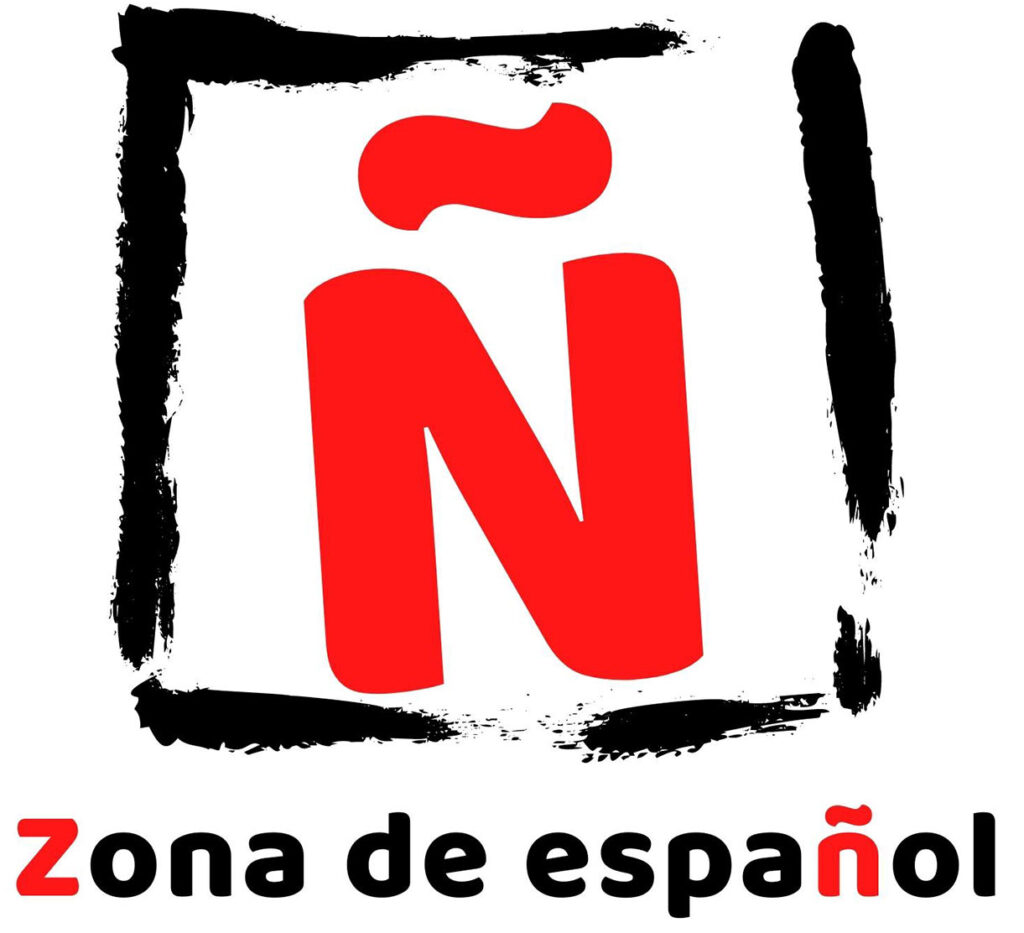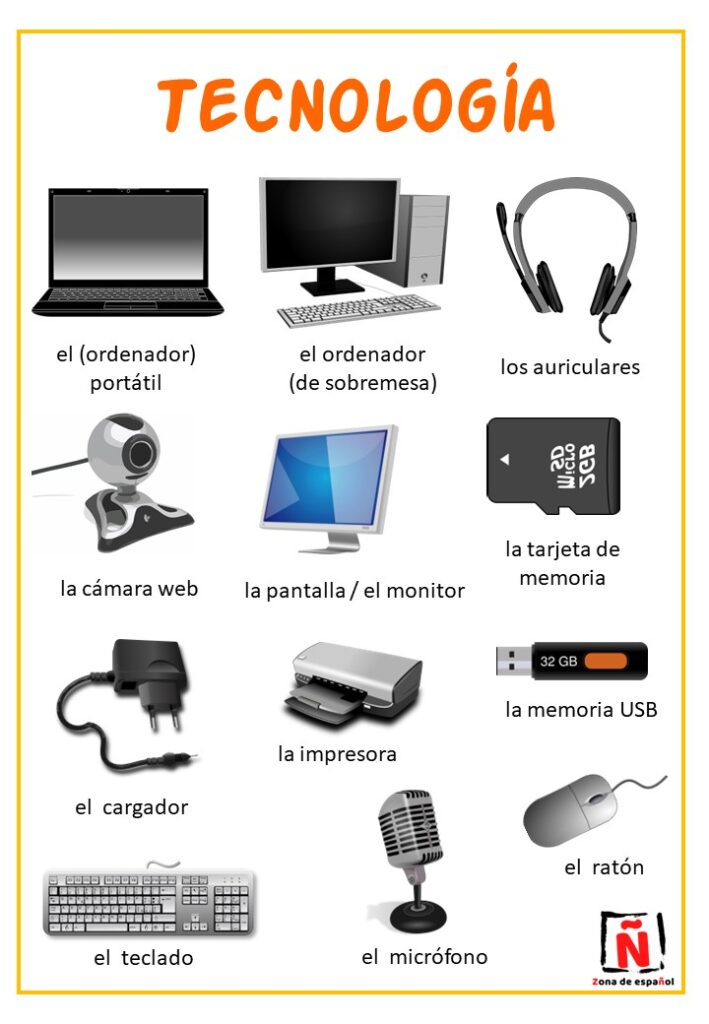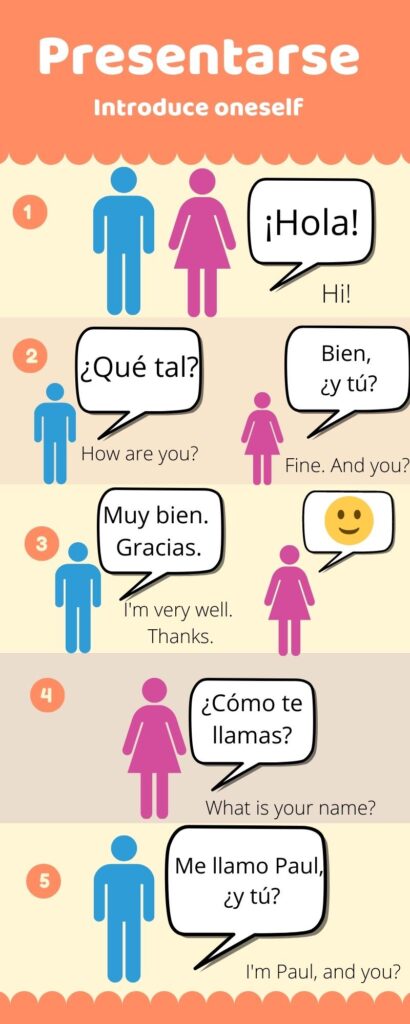In today’s post, we are going to continue learning grammar in Spanish. We are going to learn reported speech, but what is it?
The indirect style or reported speech in Spanish is the transmission of words that other people have said or that we ourselves have said to another person. In contrast, direct style reproduces the words that another person has said in a literal manner, always enclosed in quotation marks (“”).
To indicate in indirect style what has been said, we use the particle “que“:
Me ha dicho que…
Me ha contado que…
Me ha comentado que…
Example:
Julia: “Voy de viaje este fin de semana”.
Indirect style: Julia me ha dicho que va de viaje este fin de semana.
The most frequent verb used in indirect style is “decir,” but there are many others such as: afirmar, comentar, contar, explicar, invitar, negar, ordenar, pedir, preguntar, proponer, sugerir, recomendar, recordar…
Some verbs provide all the information we want to convey with our message, like felicitar, agradecer, despedirse, saludar…
Alfonso: “Feliz cumpleaños”.
Reported speech: Alfonso me ha felicitado por mi cumpleaños.
Reported Speech in Spanish: Questions
1. If the question has a closed (yes/no) answer, we use the particle “si.”
Example:
Ana: “¿Eres española?”
Indirect style: Ana me ha preguntado si soy española.
2. If the question carries an interrogative (how, where, when…), we include it in our reported speech.
Example:
Ana: ¿Cuándo empieza el curso de español?
Indirect style: Ana me ha preguntado cuándo empieza el curso de español.
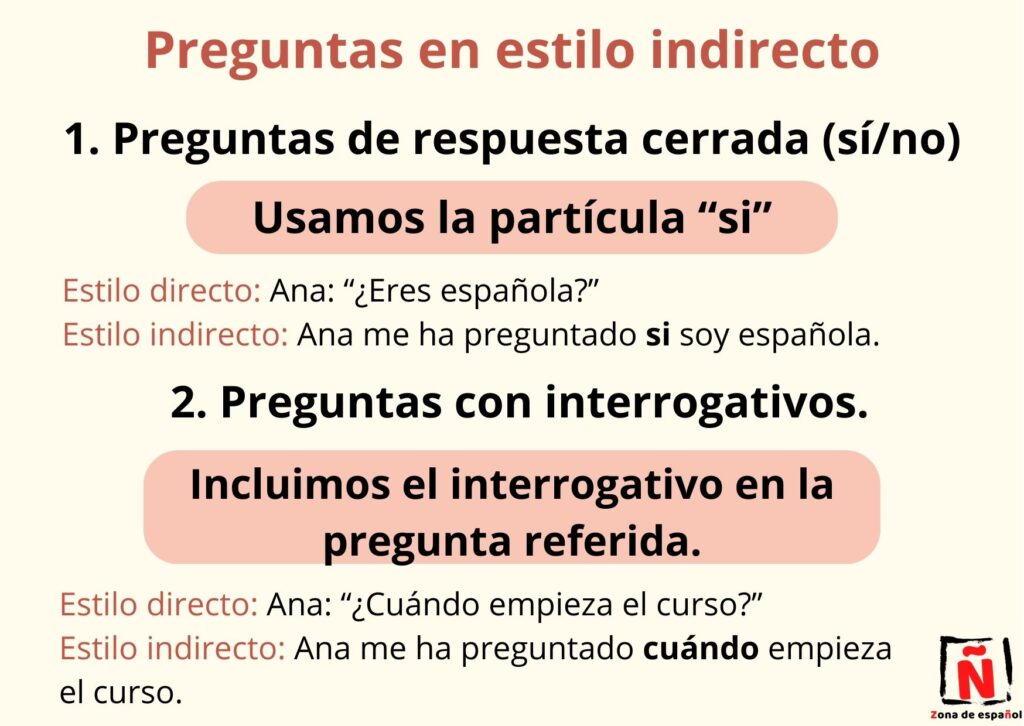
In a more colloquial form, we can add “que” before the interrogative. Example:
Ana me ha preguntado (que) si soy española
Ana me ha preguntado (que) cuándo empieza el curso.
When changing spatial and temporal details, many things also change: pronouns, possessives, verb tenses, verbs like traer, llevar, ir, venir, etc.
Example 1:
Alicia: ¿Vienes a comer a mi casa?
Reported speech: Alicia me ha preguntado si voy a comer a su casa.
Example 2:
Alicia: “¿Me traes un café a mi oficina?”
Indirect style: Alicia me ha preguntado si le llevo un café a su oficina. Also, in this case, we can change the verb to “preguntar” since it is a request: Alicia me ha pedido que le lleve un café a su oficina.
Reported Speech in Spanish: Orders, Requests, and Advice
For orders, requests, and advice, we use the structure “que” + subjunctive.
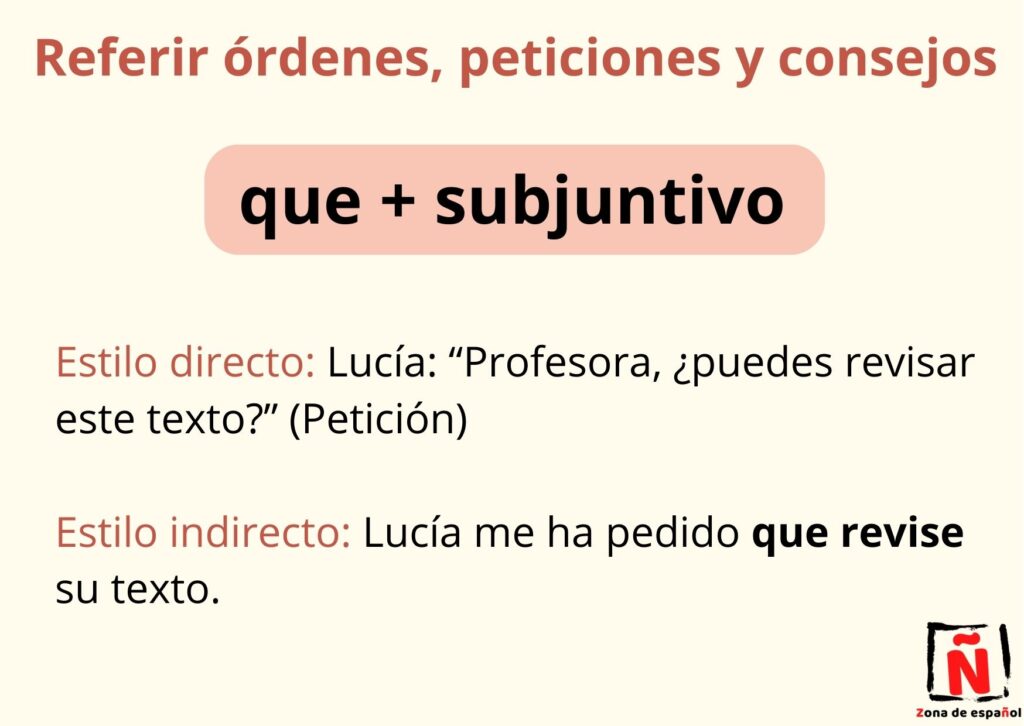
Example 1:
Lucía: “María, ¿puedes revisar este texto?” (Request)
Indirect style: Lucía me ha pedido que revise su texto.
Example 2:
Lucía: Si te duele la garganta, ve al médico. Reported message: Mensaje referido: Lucía me ha aconsejado/me ha dicho que, si me duele la garganta, vaya al médico.
Estilo indirecto en español. Gramática del español. de Zona de Español
The complication of indirect style lies in considering all the changes that occur in reported speech, especially the change in verb tenses. This is usually the most challenging aspect for all students.
Later, we will explore this further. I hope this post has been useful; remember that you can comment, ask questions, and share it.
